|
Double-crested Cormorant with aberrant pale plumage in Barrie, Ontario |
|
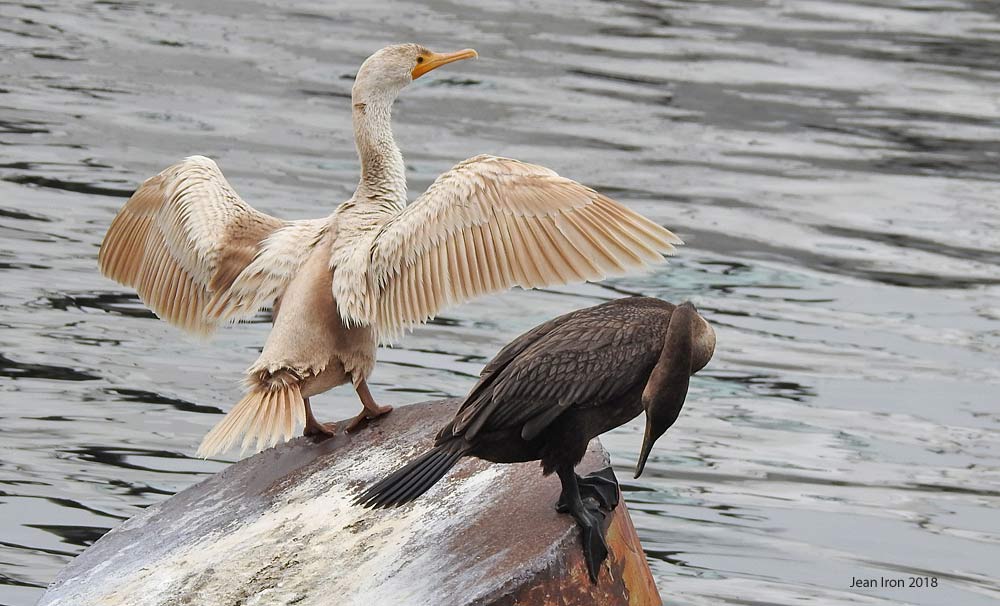 |
|
This Double-crested Cormorant with an aberrant
pale plumage is with
a normal Double-crested Cormorant on the Barrie waterfront. It lacks pigments that would give it the normal plumage, legs and
bill coloration. Aberrant plumage expert, Hein van Grouw, Senior
Curator at The Natural History Museum in Tring, UK, advised me that
"The aberrant plumage colour of this Cormorant is
the result of a mutation which affects the melanin synthesis and
therefore original black remains dark-brown (as the melanin
synthesis is incomplete)." He explained that it could be either of
two mutations. "One is the mutation Brown, although that mutation
normally does not affect the skin colour (bill and feet) as much as
in this individual. Another ‘candidate’ is a dark form of Ino. Both
mutations, Brown and Ino, are sex-linked so this bird is most likely
a female." Feathers resulting from both of these mutations are
easily bleached by sunlight, causing them to turn whitish. 7 October 2018. |
|
|
|
ACTION VIDEO: Aberrant pale Double-crested Cormorant swimming, fishing,
flying and preening |
|
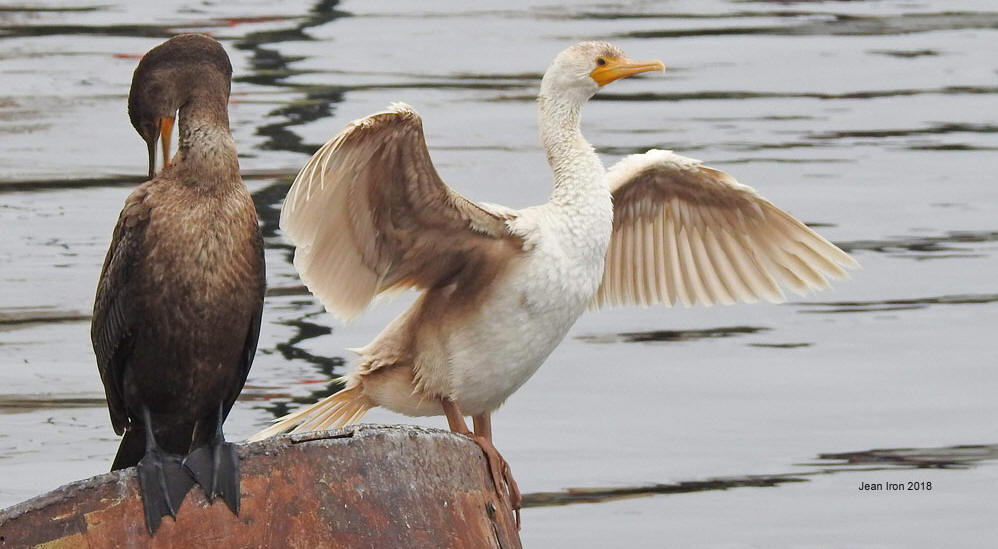 |
|
This pale Double-crested Cormorant`s eye is a
pale bluish-brownish. It's not an albino because all the black and
brown areas of its plumage are not completely white and the eyes are
not red. It's also not leucistic, which means white, because in this
condition a variable number of dark feathers would be completely
white. The mutation affecting this cormorant caused its feathers to
be brown, not white, and subsequently they have bleached unevenly
from brown to white. Brown patches are visible under the wing and on
the flanks for example. To learn more about aberrant plumages,
please Hein van Grouw's excellent article:
What Colour is that bird: the causes and recognition of common
colour aberrations in birds |
|
|
|
When Double-crested Cormorants hold their wings
open it's called "Wing-spreading". This important posture is to dry
their feathers after being in the water, not to regulate body
temperature. Double-crested Cormorants have "wettable" feathers, which means the outer feather layers are
loose and absorb water to increase weight. They also trap less air
in order to reduce buoyancy and improve diving efficiency. (Birds
of North America online - Double-crested Cormorant). |
|
|
|
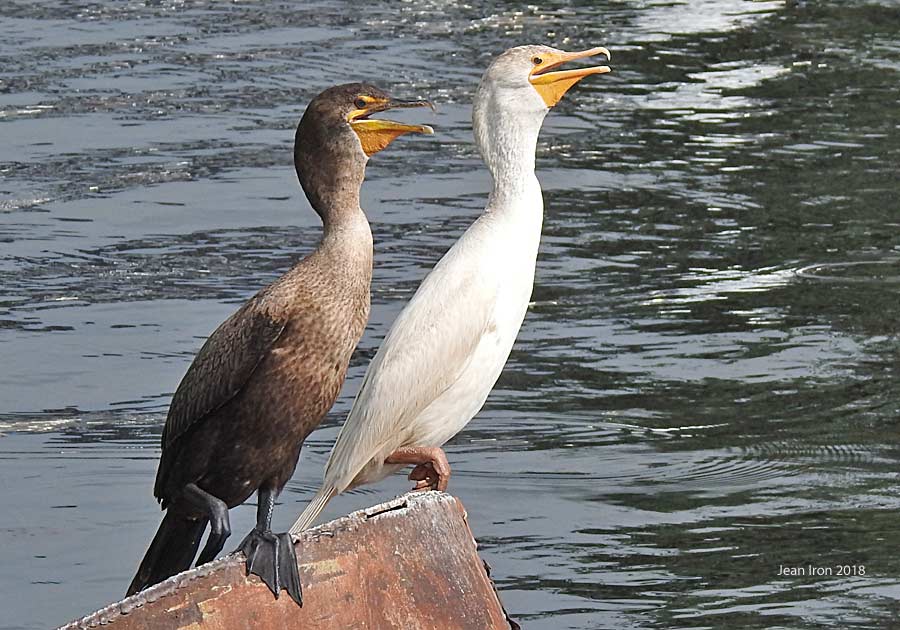 |
|
On 9 October 2018, the temperature in Barrie hit a high of 27C plus
high humidity. The "Brown or Ino" Double-crested Cormorant cooled itself
by "fluttering the gular" area to move air into its mouth and
esophagus.The normally-plumaged cormorant did the same.
Please see video showing it "fluttering the gular" |
|
|
|
 |
|
Double-crested
Cormorant with an aberrant plumage was very active swimming and feeding along the Barrie
shoreline. 7 October 2018 |
|
|
|
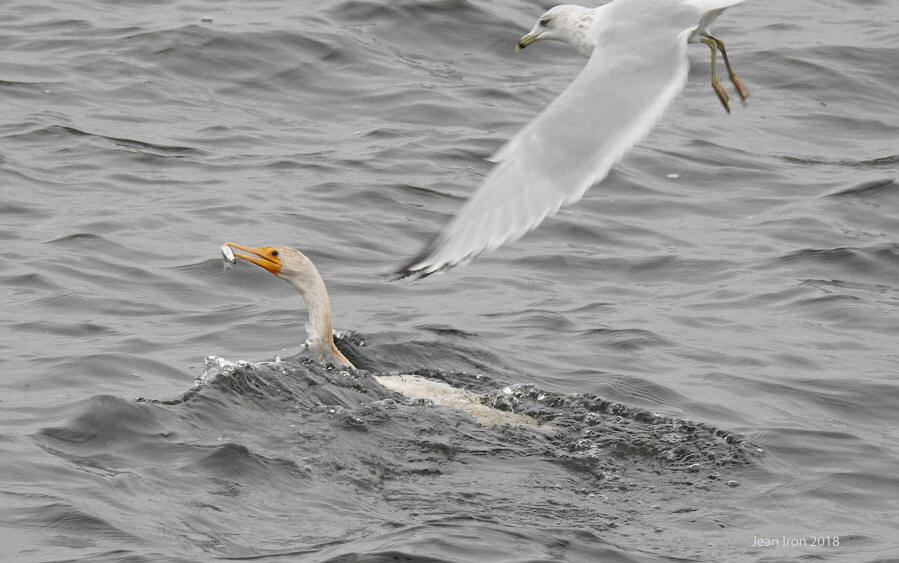 |
|
It caught several fish. The
gulls tried to take it away. 7 October 2018 |
|
|
|
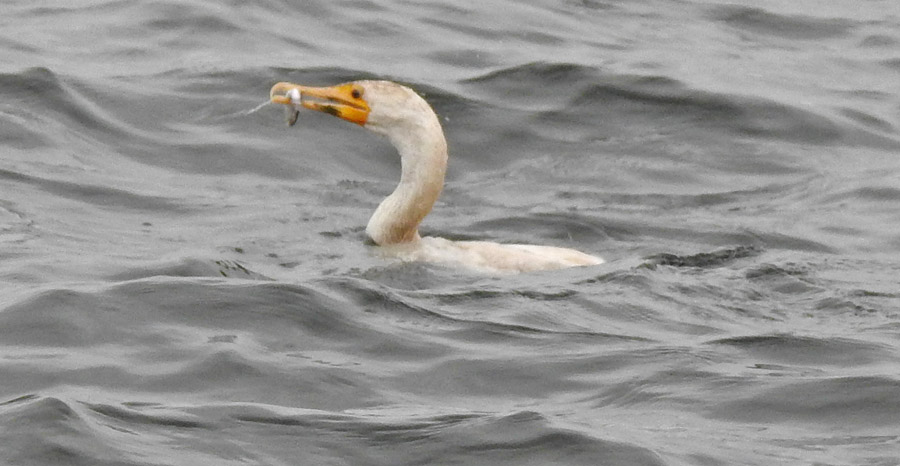 |
|
Minnows are abundant in Lake
Simcoe. 7 October 2018. |
|
|
|
My article in December 2018 issue of Ontario Birds:
Double-crested cormorant with aberrant pale plumage |
|
|
|
|
|
|